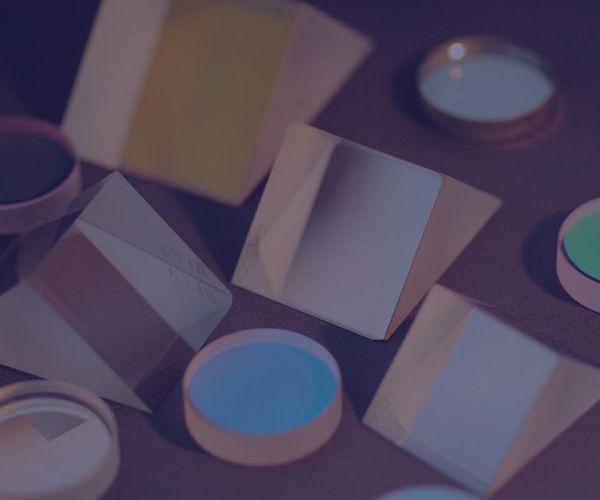THe optical materials we use
We manufacture exceptional optics for high-energy laser systems from a range of high quality optical materials from raw optical glass blanks from suppliers such as Corning, Heraeus, Nikon, Ohara or Schott.

The roughly shaped pieces come in a variety of shapes, dimensions and compositions, with properties such as refractive index, Abbe number (dispersion) and quality grades specified by the manufacturer.
A predominant glass for our products is Corning 7980 fused silica and equivalent materials from other manufacturers. Fused silica is a reliable material because of its low refractive index (nd = 1.46), low dispersion (vd = 67.8), low coefficient of thermal expansion (CTE) and exceptionally high transmittance from the deep UV through the visible and infrared. Additionally, fused silica substrates are non-crystalline, exhibit extremely low refractive index variations, low birefringence and a high degree of laser resistance. Fused silica an ideal material for use in systems requiring extremely high laser-induced damage threshold (LIDT).
Fused silica from Corning is also notable in that all types (aside from industrial grade FS) are classified as grade 5. This means they are free of striae under ISO 10110 Part 4; striae being strands with a differing refractive index to the rest of the material. The benefit to the customer is there is no risk of additional unwanted aberrations when purchasing a fused silica optical component from MPO.
Another material we have a great amount of experience fabricating with is the Borosilicate glass N-BK7. Like its cousin Fused Silica, N-BK7 Has a low index (nd = 1.52), low dispersion (vd = 64.2) and high transmittance throughout the visible and infrared (380-2100nm). It is hard, scratch resistant and shows high homogeneity with low bubble and inclusion content.
Though we primarily deal with Fused Silica and N-BK7 components we regularly fabricate many other glass types.

